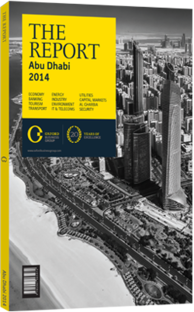Saeed G Al Romaithi, CEO, Emirates Steel, on the UAE meeting regional steel demand

As steel consumption continues to grow in line with heightened demand in the region, the UAE is well positioned to meet rising production capacity requirements. After witnessing steady growth for the better part of the last decade, the global steel industry suffered a setback due to the global financial crisis in 2008, as consumers utilised existing inventories rather than buying new stock. The industry then witnessed a turnaround in 2009 and has continued to grow thereafter, in sync with global economic recovery. While the challenging economic conditions subside and overcapacity is absorbed, global steel demand is once again on the rise.
The per capita value of China’s construction industry is expected to increase from $473 in 2014 to $680 by 2020. And within the region growth has been underpinned by significant construction and infrastructure spending in the UAE, Saudi Arabia and Qatar, which is estimated to have reached $146bn in 2013 and there are further plans for an additional $360bn worth of projects already on the table. As a result, the per capita value of the construction industry in the GCC will dwarf that of China, increasing from $2045 in 2014 to $3256 in 2020.
We estimate that by 2015 GCC member states will have the combined capacity to produce well over 24m tonnes of steel for use in construction and infrastructure; that means capacity for some 18m tonnes of rebar, 3m tonnes of wire rod and approximately 3m tonnes of structural sections.
In addition, intensive spending in the UAE has resulted in an increase of the country’s investments in construction production capacity. Currently the UAE has 4.1m tonnes of installed rebar capacity, 1.3m tonnes of section capacity and 800,000 tonnes of wire rod capacity.
It is also important to note that with additional capacity, as well as the expansion of existing mill capacity, rebar demand in the region is expected to be met mostly by domestic producers. This will minimise the need for imports, which so far have been met by imports of finished steel products from Turkey, India, China and the Commonwealth of Independent States member nations, among others.
Increased local production capacity has been facilitated by recent developments in transportation infrastructure around industrial zones, most notably Khalifa Port at the Khalifa Industrial Zone Abu Dhabi (KIZAD) and Mussafah Port at the Industrial City of Abu Dhabi. KIZAD offers access to relatively deeper loading and unloading facilities, thereby enabling easy import of bulk raw materials and export of finished goods. Mussafah has an extensive water frontage with up to 40 km of waterside land either developed or available for development, with a new 9-metre deepwater channel.
These infrastructure developments are in place to lower operating costs, facilitate ease of doing business and create an integrated transportation system that allows for access to global markets.
Along with the completion of the Etihad Rail, the UAE will have an established transportation network that will facilitate the movement of goods and commodities between national ports and abroad.
In addition, the railway will facilitate the diversification of economic activity by providing the non-hydrocarbons sector with a secure and reliable means of transporting large volumes of goods to customers, thereby reducing companies’ logistics costs and increasing the competitiveness of goods produced in the UAE on the global market.
Going forward, GCC countries are expected to remain major consumers of steel products, as they continue to invest in infrastructure and the petrochemicals sector in order to sustain their economic expansion. With new industrial infrastructure developments, the emirate of Abu Dhabi continues to position itself to meet growing demand and has firmly established itself as a serious growth market for projects in the region, right behind Saudi Arabia.
You have reached the limit of premium articles you can view for free.
Choose from the options below to purchase print or digital editions of our Reports. You can also purchase a website subscription giving you unlimited access to all of our Reports online for 12 months.
If you have already purchased this Report or have a website subscription, please login to continue.

